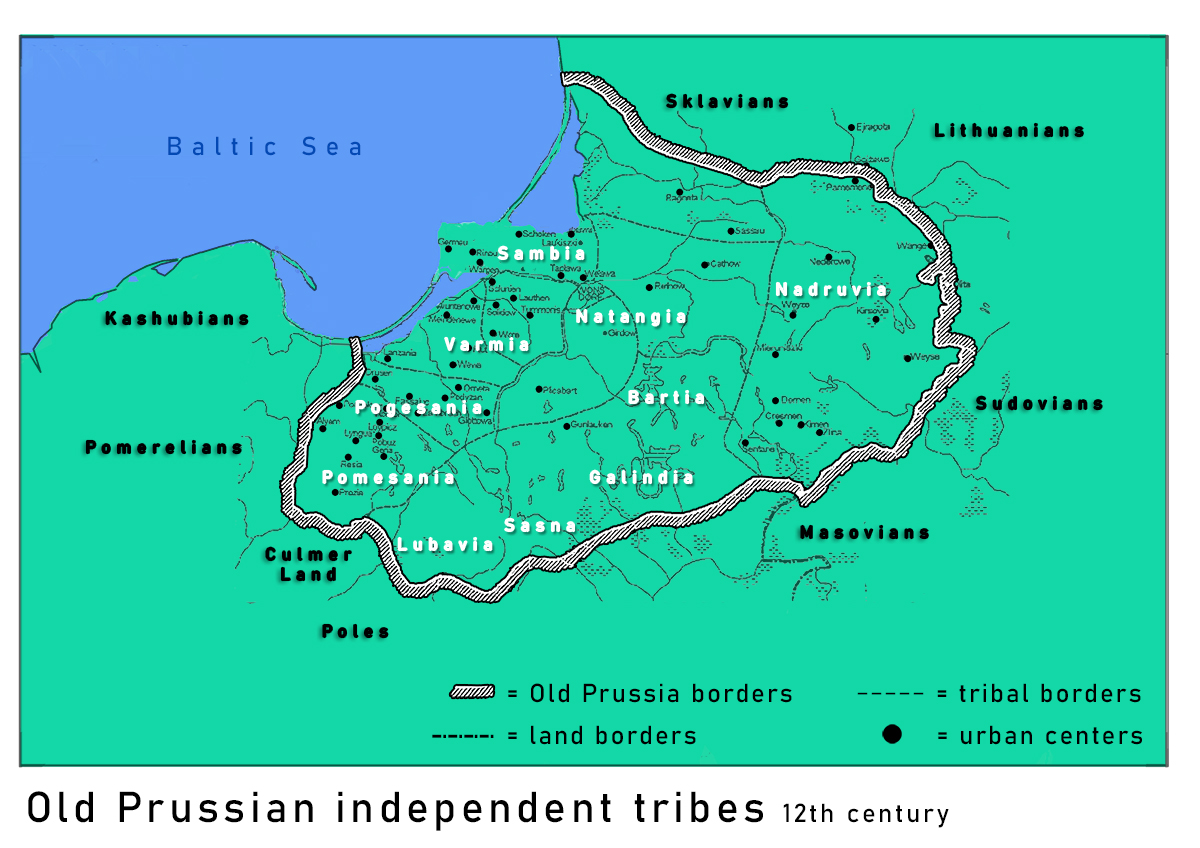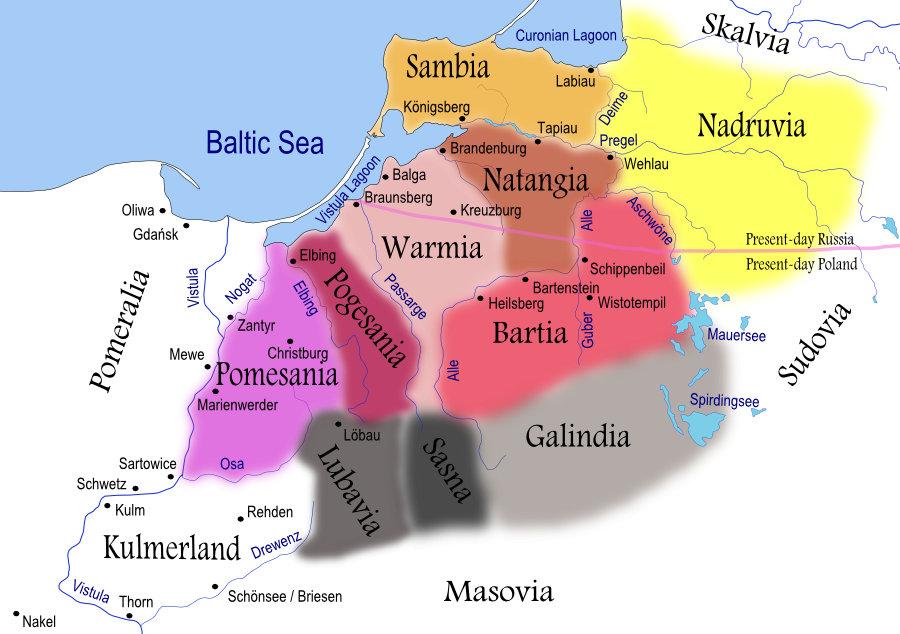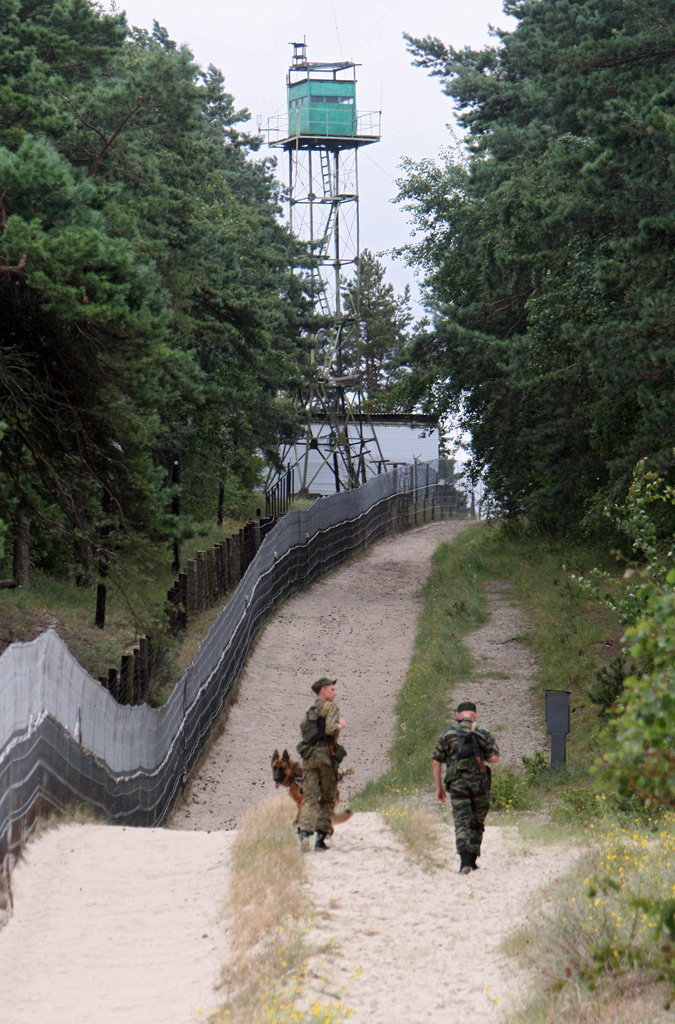|
Sambia
Sambia () or Samland () or Kaliningrad Peninsula (official name, , ''Kaliningradsky poluostrov'') is a peninsula in the Kaliningrad Oblast of Russia, on the southeastern shore of the Baltic Sea. The peninsula is bounded by the Curonian Lagoon to the north-east, the Vistula Lagoon in the southwest, the Pregolya River in the south, and the Deyma River in the east. As Sambia is surrounded on all sides by water, it is technically an island. Historically it formed an important part of the historic region of Prussia. Etymology Sambia is named after the Sambians, an extinct tribe of Old Prussians. ''Samland'' is the name for the peninsula in the Germanic languages. Polish and Latin speakers call the area ''Sambia'', while the Lithuanian name is ''Semba''. Geography and geology Baedeker describes Sambia as "a fertile and wooded district, with several lakes, lying to the north of Königsberg" (since 1946 Kaliningrad). The landscape is hilly in the west, with coastal bluffs and ... [...More Info...] [...Related Items...] OR: [Wikipedia] [Google] [Baidu] |
Sambians
The Sambians were a Prussian tribe. They inhabited the Sambia Peninsula north of the city of Königsberg (now Kaliningrad). Sambians were located in a coastal territory rich in amber and engaged in trade early on (see Amber Road). Therefore, they established contacts with foreign nations before any other Prussians. However, as with all other Prussians, they were conquered by the Teutonic Knights, and, exposed to assimilation and Germanization, became extinct sometime in the 17th century. The Sambians bordered the Natangians in the south, and the Nadruvians in the east. History Engaged in the amber trade, Sambia was the richest and most densely populated region of Prussia. It provides a wealth of artifacts from the Bronze Age, including imported goods from the Roman Empire. Sambians, unlike other Prussians, did not cremate their dead. They built earth barrows above graves and surrounded them with stone circles. The name of the clan was first mentioned in 1073 by Adam of Bremen ... [...More Info...] [...Related Items...] OR: [Wikipedia] [Google] [Baidu] |
Königsberg
Königsberg (; ; ; ; ; ; , ) is the historic Germany, German and Prussian name of the city now called Kaliningrad, Russia. The city was founded in 1255 on the site of the small Old Prussians, Old Prussian settlement ''Twangste'' by the Teutonic Knights during the Northern Crusades, Baltic Crusades. It was named in honour of King Ottokar II of Bohemia, who led a campaign against the pagan Old Prussians, a Baltic tribe. A Baltic Sea, Baltic port city, it successively became the capital of the State of the Teutonic Order, the Duchy of Prussia and the provinces of East Prussia and Province of Prussia, Prussia. Königsberg remained the coronation city of the Prussian monarchy from 1701 onwards, though the capital was Berlin. From the thirteenth to the twentieth centuries on, the inhabitants spoke predominantly German language, German, although the city also had a profound influence upon the Lithuanian and Polish cultures. It was a publishing center of Lutheranism, Lutheran literatu ... [...More Info...] [...Related Items...] OR: [Wikipedia] [Google] [Baidu] |
Svetlogorsk, Kaliningrad Oblast
Svetlogorsk (; ; ) is a coastal resort town and the administrative center of Svetlogorsky District of Kaliningrad Oblast, Russia, located on the coast of the Baltic Sea on the Sambia Peninsula, northwest of Kaliningrad. In the 2021 census, it had a population of: . History Svetlogorsk is situated in the historical region of Sambia in Prussia. It was established in 1258 as a Sambian fisherman settlement named Ruse-moter (lit. ''region of cellars''). The Teutonic Order that conquered the land gradually corrupted the name into Rause-moter, Raushe-moter, and finally ''Rauschen''. The Teutonic Order set a new direction for the life of the village: they blocked off the Katzenbach stream, which flows into the lake, and installed a mill on the stream. From that time on, the lake became known as Mühlen-teich (Mill Pond), and the mill business became the main one for the inhabitants of the village. During the Order's times it was the largest mill in Sambia. After the subsequent Thirte ... [...More Info...] [...Related Items...] OR: [Wikipedia] [Google] [Baidu] |
Old Prussians
Old Prussians, Baltic Prussians or simply Prussians were a Balts, Baltic people that inhabited the Prussia (region), region of Prussia, on the southeastern shore of the Baltic Sea between the Vistula Lagoon to the west and the Curonian Lagoon to the east. As Balts, they spoke an Indo-European languages, Indo-European language of the Baltic languages, Baltic branch now known as Old Prussian language, Old Prussian and worshipped pre-Christian Prussian mythology, deities. Their ethnonym was later adopted by predominantly Low German language, Low German-speaking inhabitants of the region. The duchy of the Duchy of Poland (c. 960–1025), Polans under Mieszko I, which was the predecessor of the Kingdom of Poland (1025–1385), Kingdom of Poland, first attempted to conquer and baptize the Baltic tribes during the 10th century, but repeatedly encountered strong resistance. Not until the 13th century were the Old Prussians subjugated and their lands conquered by the State of the Teuton ... [...More Info...] [...Related Items...] OR: [Wikipedia] [Google] [Baidu] |
Prussia (region)
Prussia (; ; ; ; ; //) is a Historical regions of Central Europe, historical region in Central Europe on the south-eastern coast of the Baltic Sea, that ranges from the Vistula delta in the west to the end of the Curonian Spit in the east and extends inland as far as Masuria, divided between Poland (Warmian–Masurian Voivodeship), Russia (Kaliningrad Oblast) and Lithuania (Lithuania Minor). This region is often also referred to as Old Prussia. Tacitus's ''Germania (book), Germania'' (98 AD) is the oldest known record of an eyewitness account on the territory and its inhabitants. Pliny the Elder had already confirmed that the Romans had navigated into the waters beyond the ''Cimbric peninsula'' (Jutland). Swedes (Germanic tribe), Suiones, Sitones, Goths and other Germanic people had temporarily settled to the east and west of the Vistula River during the Migration Period, adjacent to the Aesti, who lived further to the east. Overview The region's inhabitants of the Middle ... [...More Info...] [...Related Items...] OR: [Wikipedia] [Google] [Baidu] |
Galtgarben Hill
Galtgarben Hill (in World War II documents known as Bismarck's Peak, its height is ,''Белобородов А.П.'' Всегда в бою. — Москва: Экономика, 1984. German: Galtgarben) is a mountain located on the territory of the Sambia Peninsula of the Kaliningrad oblast of Russia. Its height of 110.4 meters above sea level is the highest point of the peninsula. Until March 1, 1945, the top of the mountain was crowned by the Bismarck Tower, built through the efforts of the Pan-German League and opened on September 23, 1906, which in February 1945 was used as an observation post by General Beloborodov, commander of the 43rd Army of the Red Army. Description Galtgarben Hill is located in the central part of the Sambia Peninsula, 20 km from Kaliningrad, not far from the highway to the western part of the peninsula and the Baltic Sea coast. Surrounded on three sides by forested hills, it is invisible to the surrounding area, and only the western woodless part ... [...More Info...] [...Related Items...] OR: [Wikipedia] [Google] [Baidu] |
Kaliningrad
Kaliningrad,. known as Königsberg; ; . until 1946, is the largest city and administrative centre of Kaliningrad Oblast, an Enclave and exclave, exclave of Russia between Lithuania and Poland ( west of the bulk of Russia), located on the Pregolya, Pregolya River, at the head of the Vistula Lagoon, and the only Port#Warm-water port, ice-free Russian port on the Baltic Sea. Its population in 2020 was 489,359. Kaliningrad is the second-largest city in the Northwestern Federal District, after Saint Petersburg and the List of cities and towns around the Baltic Sea, seventh-largest city on the Baltic Sea. The city had been founded in 1255 on the site of the ancient Old Prussians, Old Prussian settlement ''Twangste'' by the Teutonic Knights during the Northern Crusades, and named ''Königsberg'' ("king's mountain") in honor of King Ottokar II of Bohemia. A Baltic port city, it successively became the capital of the State of the Teutonic Order, the Duchy of Prussia and the provinces of ... [...More Info...] [...Related Items...] OR: [Wikipedia] [Google] [Baidu] |
Amber
Amber is fossilized tree resin. Examples of it have been appreciated for its color and natural beauty since the Neolithic times, and worked as a gemstone since antiquity."Amber" (2004). In Maxine N. Lurie and Marc Mappen (eds.) ''Encyclopedia of New Jersey'', Rutgers University Press, . Amber is used in jewelry and as a healing agent in Traditional medicine, folk medicine. There are five classes of amber, defined on the basis of their chemical constituents. Because it originates as a soft, sticky tree resin, amber sometimes contains animal and plant material as Inclusion (mineral), inclusions. Amber occurring in coal seams is also called resinite, and the term ''ambrite'' is applied to that found specifically within New Zealand coal seams. Etymology The English word ''amber'' derives from Arabic from Middle Persian 𐭠𐭭𐭡𐭫 (''ʾnbl'' /ambar/, “ambergris”) via Medieval Latin, Middle Latin ''ambar'' and Middle French ''ambre''. The word referred to what is n ... [...More Info...] [...Related Items...] OR: [Wikipedia] [Google] [Baidu] |
Kaliningrad Oblast
Kaliningrad Oblast () is the westernmost federal subjects of Russia, federal subject of the Russian Federation. It is a Enclave and exclave, semi-exclave on the Baltic Sea within the Baltic region of Prussia (region), Prussia, surrounded by Poland to the south and Lithuania to the north and east. The largest city and administrative centre is the city of Kaliningrad. The port city of Baltiysk is Russia's only port on the Baltic Sea that remains ice-free in winter. Kaliningrad Oblast had a population of roughly one million in the 2021 Russian census. It has an area of . Various peoples, including Lithuanians, Germans, and Polish people, Poles, lived on the land which is now Kaliningrad. The territory was formerly the northern part of East Prussia. With the defeat of Nazi Germany in World War II, the territory was annexed to the Russian Soviet Federative Socialist Republic, Russian SFSR by the Soviet Union. Following the Aftermath of World War II, post-war migration and Flight and e ... [...More Info...] [...Related Items...] OR: [Wikipedia] [Google] [Baidu] |
Zelenogradsk
Zelenogradsk (; ; ; Lithuanian and Old Prussian: ''Krantas'') is a town and the administrative center of Zelenogradsky District in Kaliningrad Oblast, Russia, located north of Kaliningrad, on the Sambian coastline near the Curonian Spit on the Baltic Sea. Population: In its heyday, Zelenogradsk (as ''Cranz'') was a popular seaside resort on Germany's eastern Baltic coast, comparable to Bognor Regis in England. However, at the end of World War II, the Soviets took over the town, and much of its tourist traffic has been diverted to nearby Svetlogorsk. History The site of today's Zelenogradsk was originally an Old Prussian fishing village, in the proximity of Kaup, a Prussian town on the coast of the Baltic Sea in the Viking era. The area became controlled by the Teutonic Order and settled with Germans. The German name ''Cranz'', originally ''Cranzkuhren'', derives from the Old Prussian word ''krantas'', meaning "the coast". In 1466, the territory became a part of Poland as ... [...More Info...] [...Related Items...] OR: [Wikipedia] [Google] [Baidu] |
Strait Of Baltiysk
The Strait of Baltiysk (, , ) is a strait enabling passage from the Baltic Sea into the brackish Vistula Lagoon, located in Kaliningrad Oblast, Russia. The constructed strait separates the Vistula Spit from the peninsula (called Pillau Peninsula in Russia: Пиллауский полуостров, after the ) which was part of the Vistula Spit in the 15th century and now is part of Sambian Peninsula. Shipping The strait is the shipping connection from the high sea to the important Russian ports of Baltiysk and Kaliningrad in the northeastern lagoon, as well as to the Polish ports of Elbląg, Braniewo, Tolkmicko, Frombork, Sztutowo, Krynica Morska, and Nowa Pasłęka in the southeastern lagoon. ... [...More Info...] [...Related Items...] OR: [Wikipedia] [Google] [Baidu] |
Vistula Spit
The Vistula Spit (; ; ; ) is an aeolian sand spit, or peninsular stretch of land, separating Vistula Lagoon from Gdańsk Bay, in the Baltic Sea, with its tip separated from the mainland by the Strait of Baltiysk. The border between Poland (Pomeranian Voivodeship) and Kaliningrad Oblast, an exclave of Russia, bisects it, politically dividing the spit into two pieces between the two countries. The westernmost geographical point of Russia is located on the Vistula Spit. The Polish part contains a number of tourist resorts, incorporated administratively as the town of Krynica Morska. Geography Situated in the Gdańsk Bay this narrow headland (spit) is on average only few hundred meters wide (widest point is ) and with the total length of twice as long as the better known and more populous Hel Peninsula in the western part of the Gdańsk Bay. The Vistula Spit stretches in a north-easterly direction and separates the Vistula Lagoon from the southern Baltic Sea. It is separate ... [...More Info...] [...Related Items...] OR: [Wikipedia] [Google] [Baidu] |






